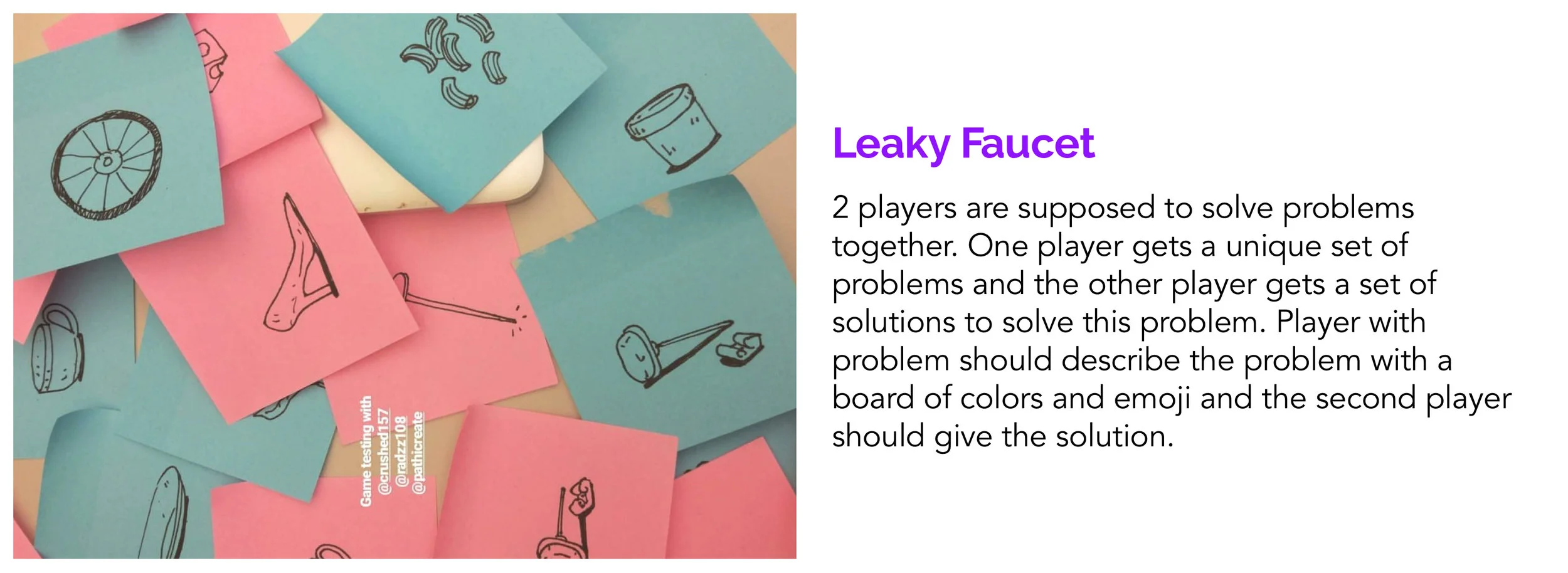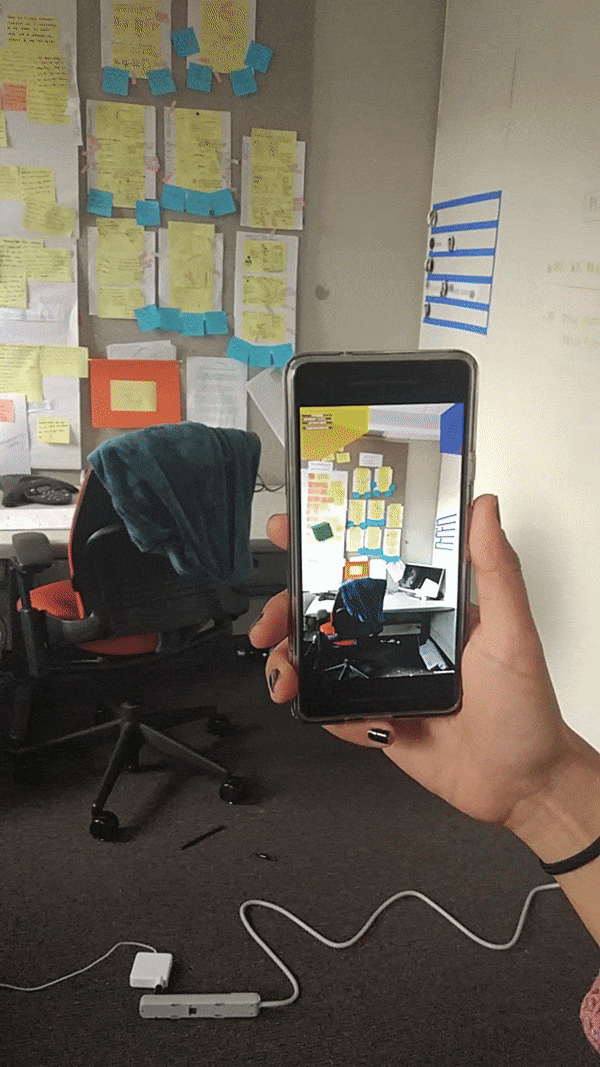Can Augmented Reality be used to improve relationships?
Team members
- Po Bhattacharya
- Yein Jo
- Radha Nath
Duration
3 months
Client
- Verizon
- Jessica Hammer
Role
- Design Lead
- Assistant Researcher
Skills
- Design leadership
- Research
- Playtesting
- 3d modelling
- Illustration
Softwares
- Unity
- Maya
- Sketch
the client & PROMPT
Verizon approached us with the prompt, "explore the space of human relationships and see how they can be enhanced using augmented reality"
OUR CONCEPT
Brick, a 2-player augmented reality mobile game that asks players to complete a pattern on a wall spawned in their space.
Player are assigned pieces which they have to pick up individually or by collaborating with the other player. Challenges like bombs, combined pieces and a timer make the game exciting.
WHAT WE HAVE SO FAR
1. SPAWN THE WALL
Both the client and host phone are held together to have a wall spawn in the center of the room.
2. COLOR ASSIGNMENTS
Players are assigned 2 colors each ( top right corner). They can only pick up pieces of the color assigned to them. Each level has a fixed time within which they are supposed to complete the pieces.
3. PICK UP PIECES
When a player walks to a piece and they are close enough for it to be picked up, the piece glows and shivers. Player pick pieces by tapping on them.
4. RELEASE PIECES
By releasing finger from the screen, a player can release the piece holding.
5. ADD PIECES TO THE WALL
Insert selected piece to a matching color on the wall.
THE PROCESS
TANDEM TRANSFORMATIONAL GAME DESIGN
We were guided by the Tandem Transformational Game Design method, a paper written by Jessica Hammer which sets an iterative/ agile design process for games. I led a workshop about the paper and it was based on this method that we designed the entire game.The entire paper can be read here.
IDEATION
The starting point for us was to create goals for the game to which each member of the team felt aligned with. We started by doing ideation sprints like round robin to build on each other's ideas, a landscape analysis to understand the current Augmented reality games and applications and literature reviews. From these sprint we made a list of goals that we voted for and found a common list of goals for the game.
1. Round Robin
2. Landscape Analysis
3. Goal Finding
FINAL DESIGN GOALS
Doing multiple rounds of the sprints and goal finding process mentioned above, we settled on these goals for the game. These goals now became the basis of all our following game ideations. We used these 4 goals for designing any game idea henceforth.
GAME CREATION SPRINTS
We conducted an Augmented Reality landscape analysis, literature reviews, and weekly design sprints that gave rise to several ideas. Each idea was evaluated with the following criteria,
- If the idea was buildable.
- If it had a good and engaging narrative.
- If the game mechanics were interesting.
At the end of phase one, we shortlisted a list of 4 best ideas and voted for the 3 best which would be carried forward in the prototyping phase.
IDEAS FROM GAME CREATION SPRINTS
PLAYTESTS
The entire project relied heavily on playtests. Playtests with low and medium fidelity were conducted to understand some of the questions we had below. These playtests helped quickly vet non working ideas and later, interactions before jumping into the high fidelity game.
PLAYTEST 1
GAME DIAGRAM FOR BRICK
Early on after the selection of the idea, we created a game diagram to understand all the components of the game. The diagram is an overview of all the interactions and challenges that are supposed to take place in the game.
PLAYTEST 2
Adopted from : https://www.schellgames.com/blog/insights/the-definitive-guide-to-playtest-questions
PLAYTEST 3
GAME ASSETS
WHAT'S IN IT FOR VERIZON?
Verizon is a telecommunications company, they would benefit hugely from this experiment if it helped enhance the experience for their current customer base. We thought of using the same game and adding a narrative ( as a result of playtest 3) that would tie to existing popular shows. Their customers can watch these shows and play the game after. Brick's abstract nature helps make it a perfect mould that can be used for different narratives, some examples for which are listed below,
NEXT STEPS
The game is currently being developed in high fidelity in Unity and will be ready as a fully playable version soon.
QUESTIONS FOR FULL PLAYABLE VERSION PLAYTEST














































